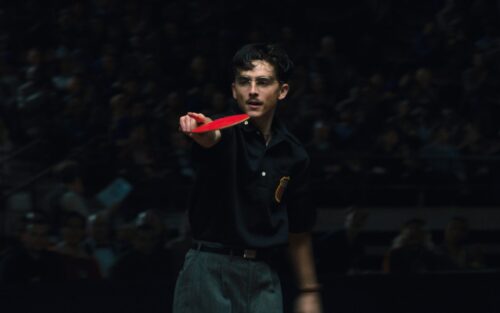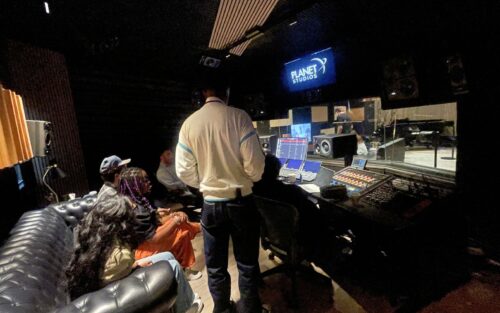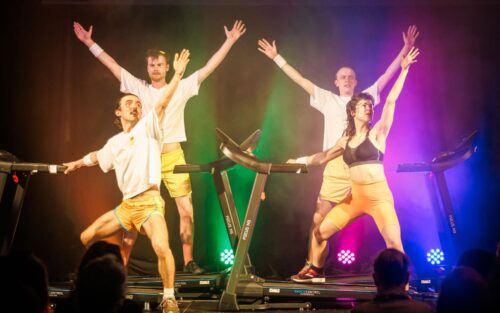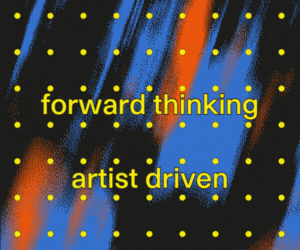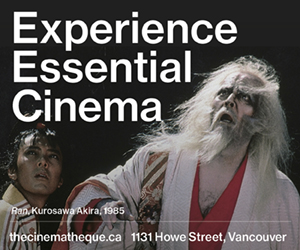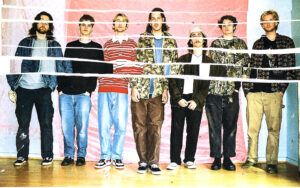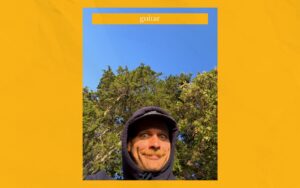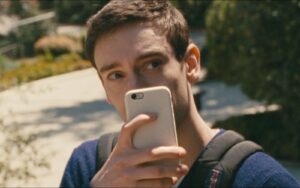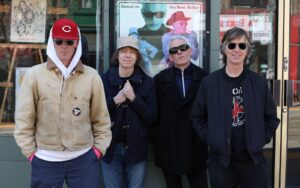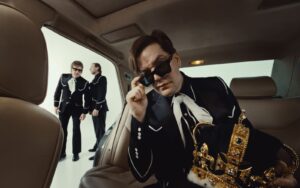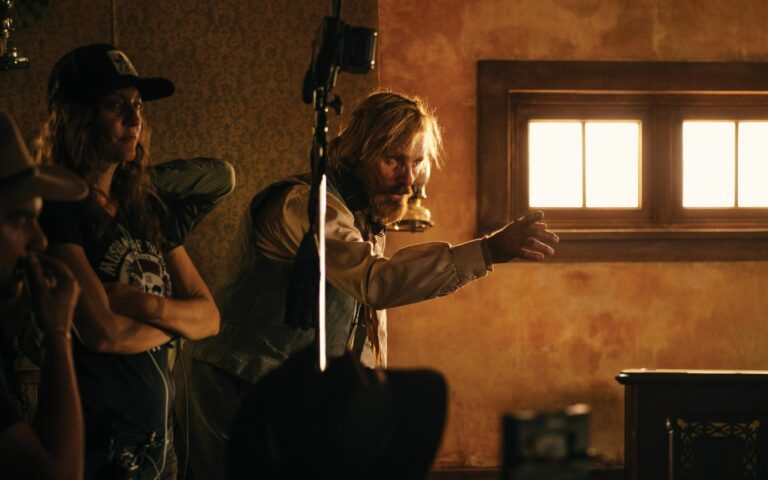
Viggo Mortensen Ain’t Afraid To Get Dusty
The Oscar-nominated actor subverts the average Western drama with sophomore directorial feature The Dead Don’t Hurt.
by Maggie McPhee
Photo by Marcela Nava
- Published on
Viggo Mortensen acts, and then some. The Lord of the Rings, Captain Fantastic and Green Book star also paints, writes poetry, takes photographs, and plays music. He even runs an independent publishing house, Perceval Press, that specialises in alternative multimedia works. He’s a prolific polymath who considers all of his artistic expression to be connected, and he has infused those interrelated interests into his second directorial feature, The Dead Don’t Hurt, a delicate, feminist Western for which he also wrote the script and composed the score.
Mortensen’s various practices emerge from the same desire to understand himself. “They’re all branches of the same tree, they come from the same impulse,” he tells RANGE. He has always been aware, even as a kid, that life was short. Creativity allows him to keep record of what happens day to day, his experiences and inspirations, as a means to savour time.
“I’ve never been good at keeping diaries, but I can do it with a poem or a photograph or something I write,” he explains, “In the case of making a movie, all those art forms come into play, and I enjoy the collective effort of telling a story — it evolves as you’re telling it, and as people have their input, and you end up with something that’s the product of, ideally, a really strong collective effort.”
The Dead Don’t Hurt is a great story first, a film second, and a western third. It follows Vivienne, an independent French-Canadian woman (played by Phantom Thread breakout Vicky Krieps) who leaves San Francisco to start a life with a new love, Mortensen’s Holger Olsen, a Danish carpenter, in the quiet frontier town of Elk Flats, Nevada. When Olsen enlists to fight for the Union during the Civil War, Vivienne must contend with the town’s corrupt men and the tragic consequences she and Holger are forced to grapple with upon his return.
“I thought we could do something different — we could tell a story about a woman, an average woman,” explains Mortensen. “There have been westerns with female lead characters, but they’re usually extraordinary women, exotic somehow, landowners, rich, special women. And this is a story about an average woman. And we stay with her throughout, from her childhood to the end of her life. And even when her male partner goes off to war, we stay with her always. You never see that.”
Like the best literature or a tale told around a campfire, the themes contained in The Dead Don’t Hurt bubble to the surface, almost indiscernible in their subtlety yet fine enough to penetrate deep beneath the skin. Mortensen guides the dualities between forgiveness and revenge, moral wars and small responsibilities, female resilience and male recklessness with a light touch, resisting over-explanation like a veteran storyteller.
“Sometimes in movies, it’s as important or more important what you don’t show as what you do show, and what you don’t say as what you do say,” says Mortensen. “The audience can think for themselves and sometimes not showing something, what the audience can imagine is much more terrible than anything we could have filmed and tried to show.”

Photo: Marcel Zyskind
Though the film exemplifies all the visual signifiers of a classic western, it contains a tenderness and understatedness unusual for the genre. Mortensen subverts such a well worn formula by injecting it with autobiographical and historical accuracy. He was initially inspired to fill out a fictional character in the image of his mother, a strong-willed and open-minded woman a lot like Vivienne. Once he placed that character in the West, the rest fell into place.
“My starting point in terms of writing a story and then filming it is never ideological or political or conceptual in any way. I just assumed that everything that I’ve lived as a person from childhood to now is gonna influence me,” he says of his process. “And if I’m writing a story like The Dead Don’t Hurt, once I realise it’s a Western, and I know specifically when it happens, then I really enjoy researching and making the story as accurate historically as I can in all its visuals, the languages, the dialects, the accents, the vocabulary, the look of things, the sound of things, the sounds of birds and flies and saddle leather and spurs.”
Historically, Westerns were propaganda vehicles used to justify the genocide of Indigenous people and sanctify settler belonging in North America. But Mortensen demonstrates the value of unearthing real accounts from that mythologized time period. Women like Vivienne existed in the multitudes — only their stories never got told. But the veracity of their collective experience charges the air, and Mortensen’s openness as a storyteller attracted it like a lightning rod.
The Dead Don’t Hurt is streaming now on digital and VOD platforms
By Glenn Alderson
A deep-listening session reveals how Apple Music’s sonic innovation reshapes the way we hear.
By Cam Delisle
Dominic Weintraub and Hugo Williams take audiences on a treadmill-fueled ride through the chaos and hope of modern life.

